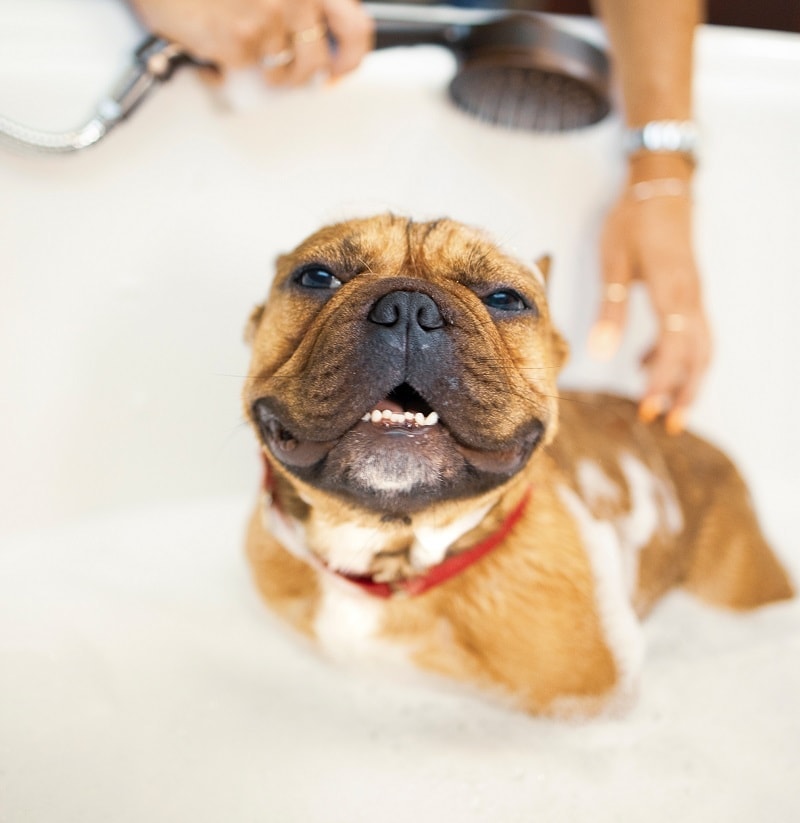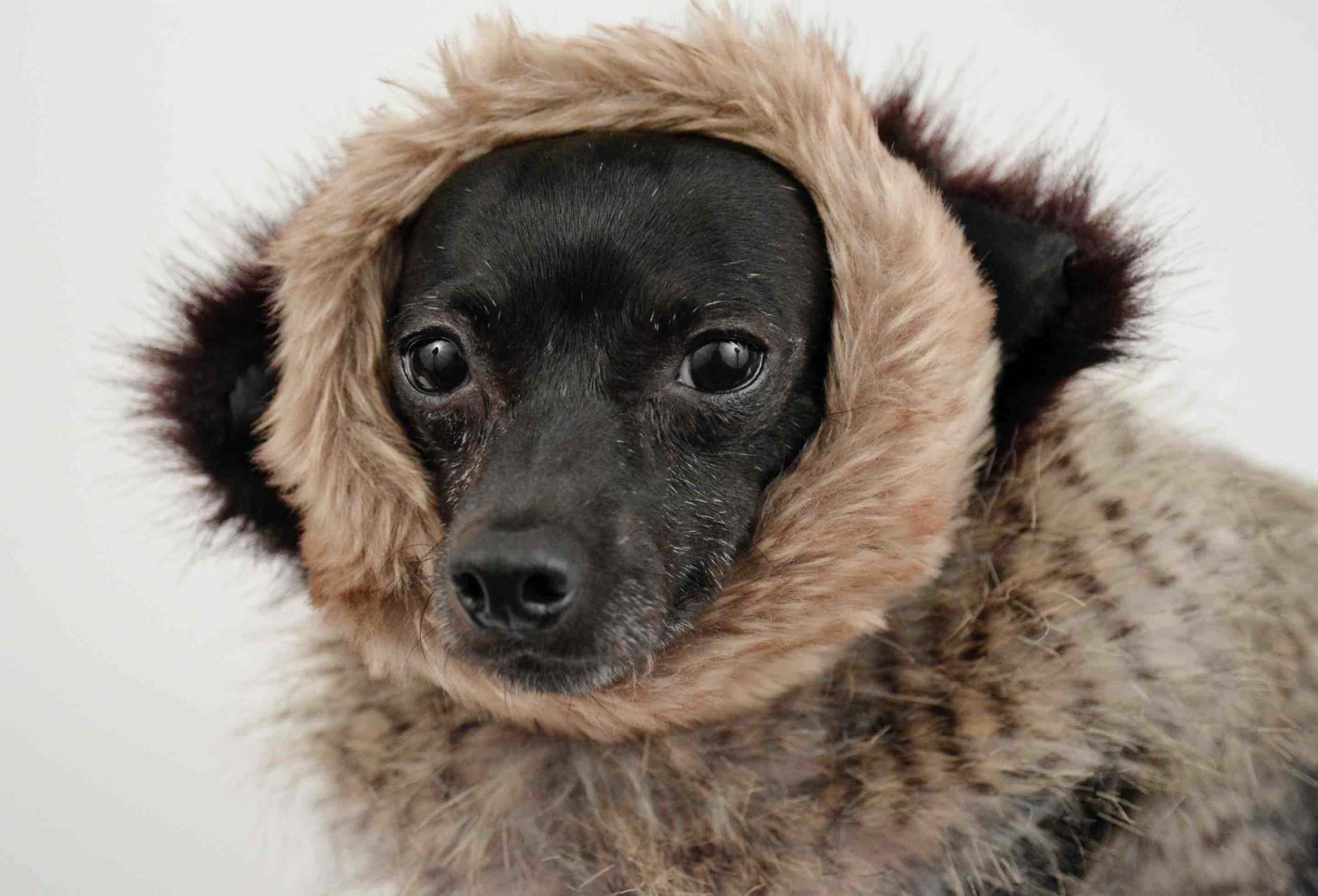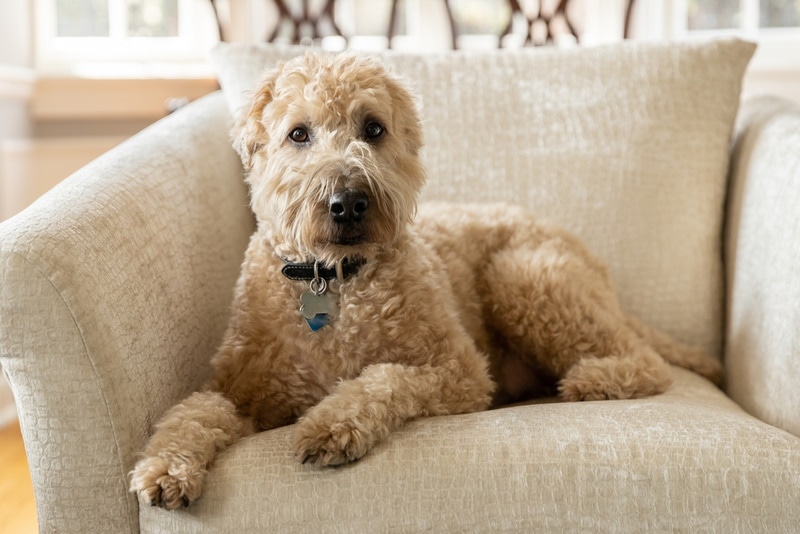How to Bathe a Dog — 10 Tips and Tricks
Updated on

It’s funny that most dogs don’t seem to like baths but won’t hesitate to splash into a muddy puddle! Bathing your dog can be a chore, but it’s also an integral part of caring for your dog.
Whether it’s just a regular bath to remove the residue of mud puddles or a medicated bath to eradicate parasites, there is a right way and a wrong way to bathe your pup.
Here, we go over the right ways, including how often you should give your dog a bath and how to go about doing it.
How Frequently Should You Bathe Your Dog?
Most dogs don’t need bathing more than once a month. However, some breeds require more baths (such as hairless dogs like the Chinese Crested, which needs weekly baths) or fewer baths (such as the Puli, which only requires a bath about four or five times a year).
How often you bathe your dog depends on the breed and their skin and coat type, but the average is once a month. If you’re unsure how often you should bathe your dog, you should talk to your vet, who can advise you on the proper grooming techniques for your particular pup.

Guidelines
Here are a few different coat-type descriptions, to give you a general idea of how often certain breeds need a bath:
- Most breeds: Most dogs need a bath once a month or as required (like in mud puddle scenarios or for flea treatments).
- Shorthaired smooth-coated breeds: Some of these breeds need less frequent baths, like the Basenji, which can groom themselves, or the Great Dane.
- Shorthaired, oily coat breeds: Some hound breeds, like the Basset Hound, have oily skin and coats, which also increases the buildup of fur and dander (the odor notwithstanding). These breeds might need more frequent bathing.
- Dense, double-coated breeds: Breeds such as the Siberian Husky and the Alaskan Malamute have thick double coats that usually need frequent brushing but less frequent baths.
- Water-repellent coated breeds: Breeds like the Labrador Retriever and the Newfoundland have water-repellent coats, so they shouldn’t have frequent baths, to preserve the natural oils in their fur.
The frequency that you wash your dog can affect the natural oils on their skin. The more often you bathe a dog that doesn’t need frequent baths, the drier their skin gets, and you’ll find more dander. Too much bathing can also result in irritated skin.
One of the best ways to determine if your dog is ready for a bath is the sniff test. Does your dog smell like they need a bath? If so, it might be a good time for it.
Where Is the Best Place to Bathe Your Dog?

When you imagine giving a dog a bath, you probably picture the bathtub. This is indeed one of the best places, particularly for large breeds. Some dog owners even get into the tub with their dogs and turn on the shower.
But if your pup is a small or toy breed, you can just pop them into a sink and give them a quick bath.
There are also standalone tubs that you can use, but the most important thing is for you to get your dog in and out of the tub safely.
Using a hose outside isn’t ideal. This is best for those times when your dog is particularly filthy and you need to rinse the muck off. But you should only do this if the weather is warm enough, as most dogs won’t enjoy the cold water.
It might also be difficult to contain your dog, as they may think that it’s playtime! They can also quickly undo the rinsing by immediately rolling around in the grass or dirt.
What’s the Best Way to Give Your Dog a Bath?
Now that you know where and how often your dog should have a bath, let’s get into the actual bathing process. This can be challenging for many dog parents. Some dogs might even escape in the middle of the bath, still covered in suds!
The steps here should help make the process a little easier.
1. Start by Brushing

Dogs, particularly longhaired breeds, must be brushed before being put in the water. Mats can hold a large amount of water and are quite heavy, so ensure that you’ve removed all the tangles, even if that means you need to get it professionally done. Matted hair pulls on the skin and can be painful for pups.
2. Make Sure You Have the Right Dog Shampoo
You should only use a shampoo that has been made specifically for dogs. Dog’s skin has a different pH than ours; if you use human shampoo on a dog, it can irritate the skin.
It’s a good idea to use a dog shampoo and a dog conditioner, particularly for long-haired breeds. Some products are shampoo-and-conditioner combos.
The shampoo will eliminate most of the dog’s natural oils, and the conditioner can help recondition and rehydrate the skin.
There are a lot of pet shampoos on the market, but not all of them will keep your pet's skin and coat happy and healthy. The Hepper Pet Shampoo products are pH balanced and made with natural, safe ingredients like soothing oatmeal and aloe vera. Our shampoos will keep your pet clean, smelling fresh, and fully moisturized! The hardest part is deciding whether to get to traditional shampoo or the rinse-free version! Here’s a quick guide to help you choose the right option for your pet’s next bath!
 Hepper Colloidal Oatmeal Pet Shampoo |
 Hepper Waterless No Rinse Pet Shampoo |
|
|---|---|---|
| Natural cucumber & aloe scent |
Natural cucumber & aloe scent:
|
Natural cucumber & aloe scent:
|
| Safe for cats & dogs |
Safe for cats & dogs:
|
Safe for cats & dogs:
|
| Rinsing required |
Rinsing required:
|
Rinsing required:
|
| Free of harsh chemicals & nasty ingredients |
Free of harsh chemicals & nasty ingredients:
|
Free of harsh chemicals & nasty ingredients:
|
| Lathers easily |
Lathers easily:
|
Lathers easily:
|
3. Gather the Supplies

First, get yourself ready by wearing comfortable clothing that you don’t mind getting soaking wet and dirty.
- Several towels: Have one for your dog to stand on and another to towel-dry them You might need an extra for yourself and any other watery messes that will likely occur.
- Washcloths: You should use the washcloths to clean the sensitive areas on your dog’s face. You’ll need one for soap and another for rinsing.
- Dog shampoo and conditioner: Make sure you have a puppy shampoo if you have a puppy, as it’s gentler on the eyes.
- Brushes and/or combs: You’ll need to brush your dog before the bath, but you should still have the tools Also, ensure that you have the right kind for your dog’s coat type. If you’re unsure of what brushes to use, ask your vet (or your groomer, if you have one).
- Treats: It’s probably a good idea to have a few treats on hand. It can help smooth things over for dogs that don’t enjoy baths.
- Non-slip mat: Consider placing a non-slip bathmat in the bath, which should prevent your dog from slipping. It can make your dog feel more secure, which might help make the bathing process less stressful for you both.
4. It’s Bathtime!
Before you start, consider placing some of the shampoo into a separate container and adding water to it. Concentrated shampoo is harder to spread around, so by adding water, the soap will be easier to spread and will sud up better.
The water should be lukewarm to warm — a comfortable temperature. When it’s time to put your dog in the tub, try to do this gently. Using treats at this point might help.
5. Wet and Shampoo the Dog

You’ll want to thoroughly saturate your dog’s coat. This might take a bit of patience for water-resistant and double-coated dogs.
Now, shampoo your pup up! If you haven’t diluted the shampoo in water, squirt the shampoo into your hands first and work it into a lather. Rub the shampoo over your dog’s body.
Make sure you get the shampoo everywhere, including their belly, armpits, and feet. Try to turn this into more of a massage. If the water and environment are warm and you’re giving your dog an all-over body massage, your dog might just look forward to bathing in the future.
Aim to shampoo and rinse your dog twice, and then use the conditioner. Your pup will have a coat that is soft and smells great!
6. Washing the Face
It is better to leave washing your dog’s face until the end. You don’t want to get shampoo or water inside their ears, eyes, and nose.
Use a washcloth, dip it in soapy water, and carefully wash your dog’s face. Use another clean washcloth dipped only in water to rinse the soap off.
You can consider using puppy shampoo for just the face, since it’s gentler on the eyes, or just be extra careful during the cleaning.
If there are eye goobers, you can use a clean, soap-free washcloth to gently remove them or use a toothbrush with soft bristles.
7. Rinse It All Off

Once you’ve finished the face, you need to thoroughly rinse off the soap and conditioner. If you don’t remove it all, your dog’s skin will become dry and irritated. You’ll need to rewash your dog to fix the problem.
8. Drying Your Dog
You must dry your dog properly. Start by towel drying your dog — this is even more essential for double-coated dogs. Without a thorough drying, your pup could develop hot spots.
If your dog is in a warm (not humid or hot, and not cold) environment, you can let them air dry after towel drying. If you want to use a blow dryer to speed up the process, you should use it on the lowest settings (warm or cool and the lowest airflow).
While air drying, brush or comb your dog every so often. This should prevent mats from developing.
9. Dogs That Hate Baths

If you have a dog that runs and hides every time you start the bath, try positive reinforcement, including using treats. Turn it into a training session of sorts — training your dog to take a bath.
Start the positive reinforcement while you’re preparing the bath. This way, your dog will start to see the bath as a good experience.
If your dog is a struggler or a gifted escape artist, ask someone in the family to help hold your dog while you bathe them. Speak calmly and gently, and reassure them throughout bathtime.
Your dog might never truly enjoy the bath, but if you use treats and make it as stress-free as possible, hopefully, it won’t be a torturous event for you both!
10. Leave It to the Professionals
In the worst-case scenario (or the best, depending on how you look at it), take your dog to a professional groomer. There are certain breeds that pretty much require professional grooming (like the Maltese!), but it can make your life easier, in general, to just let the professionals do their thing.
Not only will they bathe your dog, but they will cut the nails, trim around the face, and express anal glands. You will then pick up your dog, with them looking and smelling fabulous and thrilled to see you!
Conclusion
While bathtime might be full of drama, it can also be messy fun! As long as you approach it the right way and reassure your dog throughout the process that a bath is nothing to be afraid of, it should go just fine. Or, you can go to the groomer’s.
Following these tips should give you a safe, drama-free, and successful bathing process — and a sweet-smelling dog as the result!
Featured Image Credit: Masarik, Shutterstock













